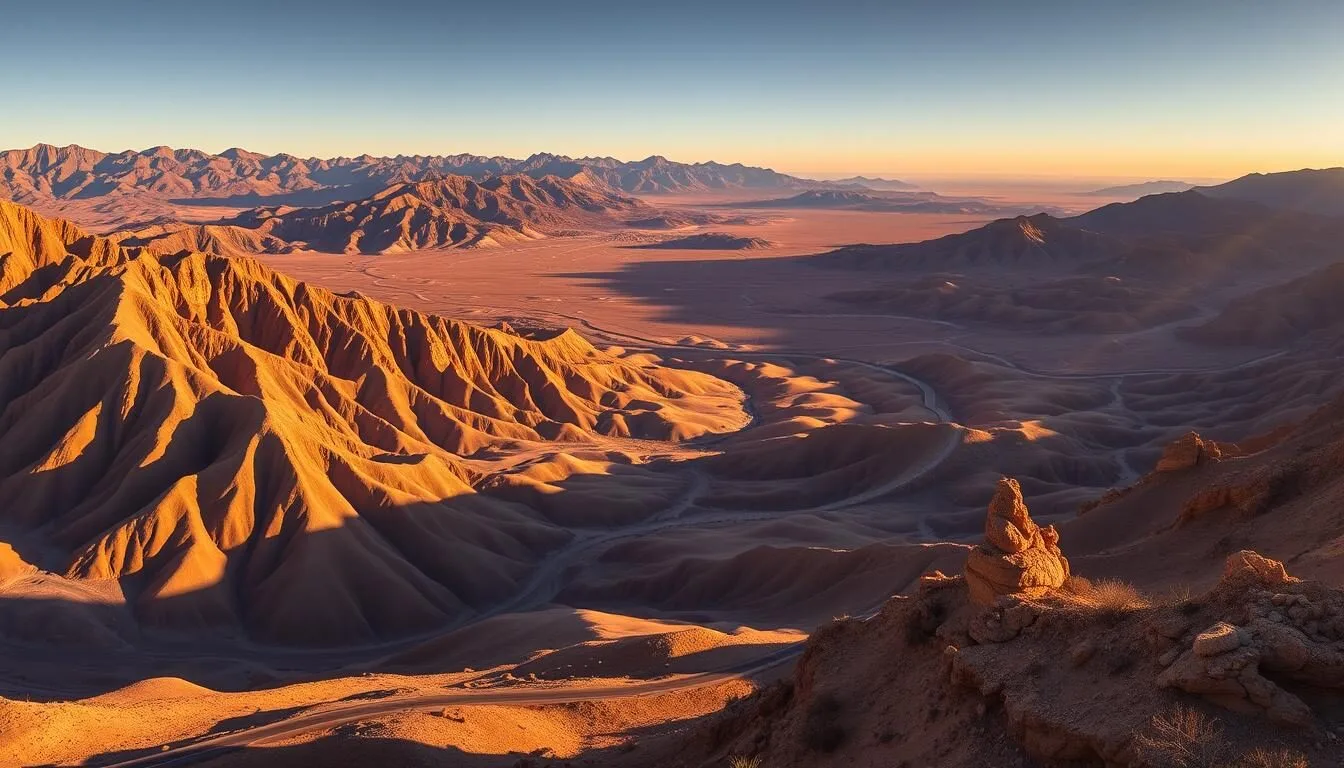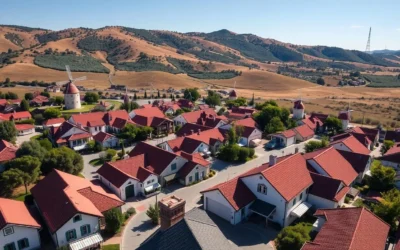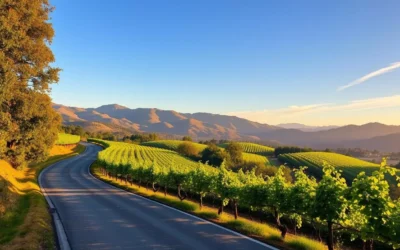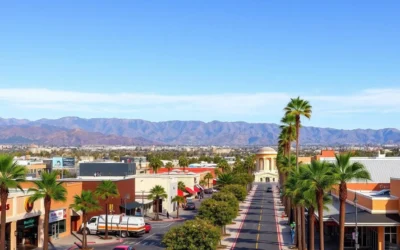You might be surprised to know that Death Valley National Park is home to more than just the lowest point in North America. The Panamint Range, forming the western boundary of Death Valley, offers a dramatic contrast with its highest peak, Telescope Peak, standing at 11,043 feet.
As you explore this less-visited part of the park, you’ll discover a diverse array of attractions and activities. From challenging hikes to scenic drives, and from historic sites to natural wonders, the Panamint Range has something for everyone.
Unlike the crowded valley floor, the Panamint Range provides a unique and serene experience. This article will guide you through the top things to do in the Panamint Range, providing practical information on when to visit, how to prepare, and what to expect.
Discovering the Panamint Range: An Overview
The Panamint Range, a lesser-known gem within Death Valley National Park, offers a unique blend of natural beauty and adventure. As you explore this fascinating region, you’ll uncover a diverse array of landscapes, from the scorching hot deserts to the snow-capped mountains.
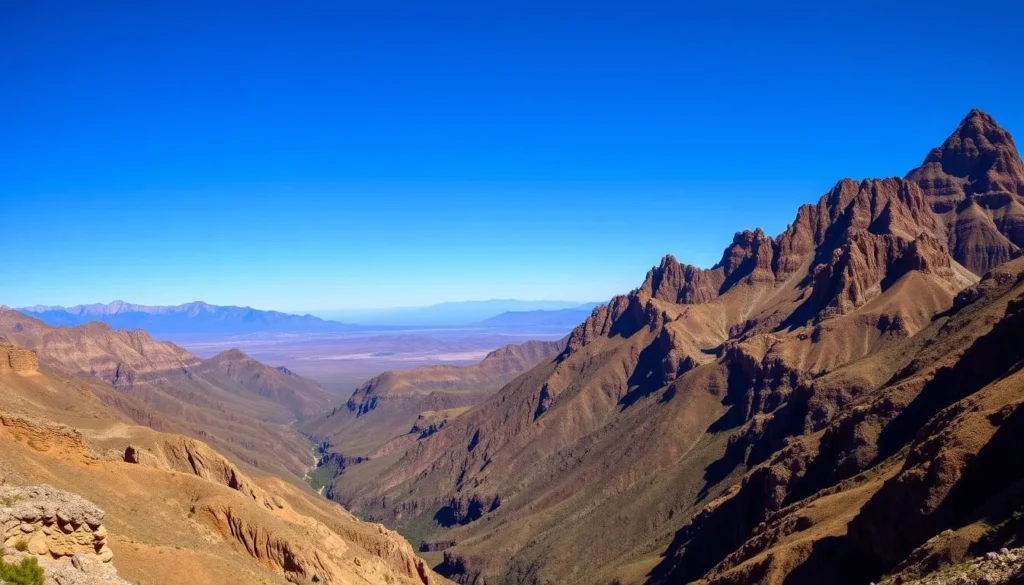
Geography and Location of the Panamint Range
The Panamint Range is situated in the western part of Death Valley National Park, California. It is one of the many mountain ranges within the park, stretching across a significant area. The range is known for its diverse geography, which includes peaks, valleys, and canyons. Telescope Peak, the highest point in the range, stands at an elevation of 11,049 feet, offering breathtaking views of the surrounding landscape.
The Panamint Range is not only a geological wonder but also a haven for wildlife and vegetation. The varied elevations and microclimates within the range support a wide range of flora and fauna, making it a fascinating area for nature enthusiasts and scientists alike.
The Panamint Range’s Role in Death Valley National Park
Death Valley National Park, where the Panamint Range is located, is the largest US national park outside of Alaska and the fifth largest US National Park, covering 3.4 million acres of land. Since becoming a national park on October 31, 1994, it has been recognized as one of the four units of the Mojave and Colorado Deserts Biosphere Reserve by UNESCO. The park attracts a significant number of visitors, with 1.1 million people visiting in 2023.
The Panamint Range plays a crucial role in the park’s ecosystem and visitor experience. It offers numerous hiking trails, scenic drives, and historical sites, making it an integral part of the park’s appeal. The range’s diverse landscapes and attractions contribute to the park’s status as a premier destination for outdoor enthusiasts.
Best Time to Visit the Panamint Range
When planning your visit to the Panamint Range, it’s essential to consider the best time to go. The ideal seasons to visit are spring (March to May) and fall (October to November), when temperatures are moderate across all elevations. During these periods, you can enjoy hiking, photography, and exploring the range’s many attractions without the extreme temperatures.
- Spring (March to May): Enjoy wildflower blooms and pleasant temperatures.
- Summer (June to September): While lower elevations can be extremely hot, higher elevations like Telescope Peak and Wildrose remain pleasant.
- Fall (October to November): Experience fall colors in the higher elevations and comfortable temperatures.
- Winter (December to February): Higher elevations often receive snow, making some roads impassable but creating spectacular scenery.
Additionally, consider the best times of day for your activities. Early mornings are ideal for hikes, while late afternoons are perfect for photography. By planning your visit according to the season and time of day, you can make the most of your trip to the Panamint Range.
Climbing Telescope Peak: Death Valley’s Highest Summit
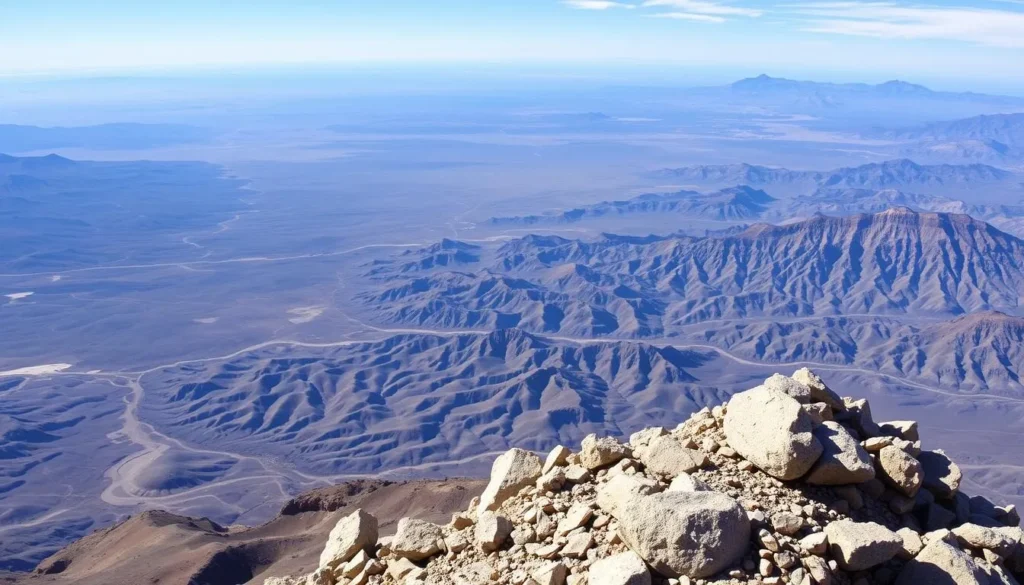
Telescope Peak, standing tall at 11,043 feet, offers hikers a unique opportunity to explore the highest point in Death Valley National Park. This challenging 14-mile hike is not for the faint of heart, but the breathtaking views from the summit make it a rewarding experience for those who are well-prepared.
Trail Details and Difficulty Level
The trail to Telescope Peak is a 14-mile round-trip hike with a significant elevation gain of over 4,000 feet. The trail is considered strenuous due to its length and the high altitude. Hikers should be prepared for a full-day hike and potential altitude sickness. The trailhead is located at the Mahogany Flat Campground, which can be accessed via a high-clearance vehicle on the Mahogany Flat Road.
You will need to have a high-clearance vehicle to reach the trailhead, as the road is rough and not suitable for standard vehicles. It’s essential to check the road conditions before heading out and to be prepared for the challenging drive.
What to Expect on the Hike
As you ascend to the summit of Telescope Peak, you can expect a diverse range of flora and fauna, including bristlecone pine trees and various species of wildlife. The hike is challenging, but the scenery is diverse, with panoramic views of Death Valley, the surrounding mountains, and on clear days, Mt. Whitney, the highest peak in the contiguous United States.
The views from the summit are breathtaking, with Badwater Basin, the lowest point in North America, visible on a clear day. You will be able to see the vast expanse of Death Valley National Park, taking in the unique geological features that make this park so fascinating.
Tips for a Successful Summit
To successfully reach the summit of Telescope Peak, it’s crucial to be well-prepared. Start early in the morning to avoid the afternoon thunderstorms that are common during the summer months. Bring at least one gallon of water per person, sun protection, layers for changing temperatures, and sturdy hiking boots.
The best time to visit Telescope Peak is typically from late spring through fall. Winter attempts require mountaineering skills and equipment, so it’s essential to assess your abilities and prepare accordingly. Additionally, be sure to check the weather forecast, inform someone of your hiking plans, and bring navigation tools, as cell service is non-existent in the area.
Acclimatizing to the high elevation is also crucial, especially if you’re coming from sea level or the valley floor. Take your time, and don’t rush the hike. With proper preparation and a good understanding of the challenges involved, you can have a successful and enjoyable hike to the summit of Telescope Peak in Death Valley National Park.
Exploring Darwin Falls: A Desert Oasis
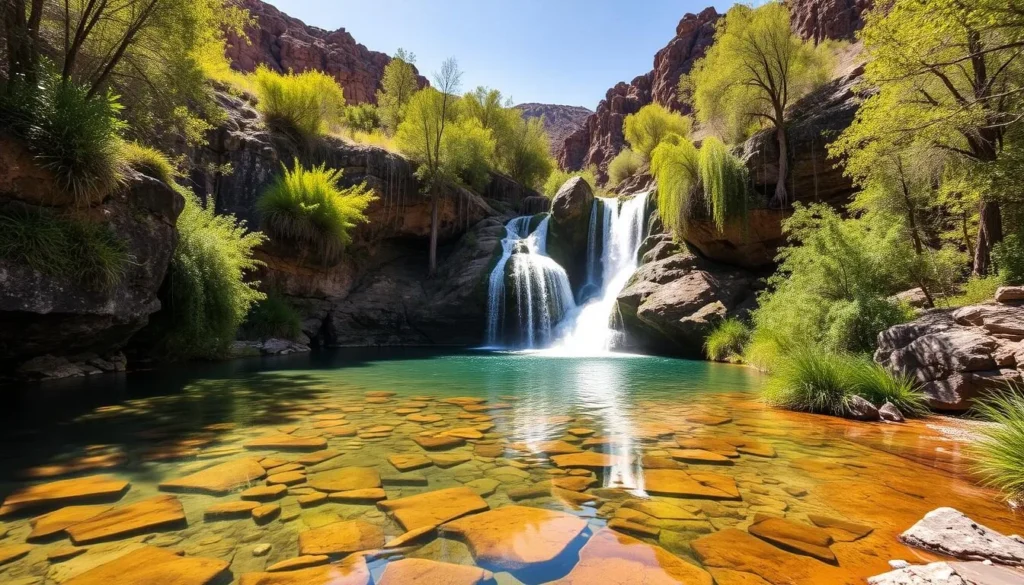
Tucked away in the Panamint Springs area of Death Valley National Park, Darwin Falls is a breathtaking oasis that offers a serene escape from the desert’s harsh conditions. This year-round waterfall is a must-visit attraction for anyone exploring Death Valley. The hike to Darwin Falls is a 2-mile round trip that takes about an hour to an hour and a half to complete, making it an accessible adventure for most visitors.
Hiking to the Waterfall
The trail to Darwin Falls begins in a desert landscape that gradually transforms into a lush oasis, providing a unique contrast that is both surprising and delightful. As you hike, the sound of running water grows louder, building anticipation for the sight of the falls. The trail is relatively easy, making it suitable for families and those looking for a leisurely hike in Death Valley. Along the way, take note of the diverse flora that thrives in this microclimate, a stark contrast to the surrounding desert.
The final approach to the falls is particularly scenic, with the waterfall emerging from a narrow canyon. The roar of the water and the sight of the lush vegetation create a tranquil atmosphere, making the hike to Darwin Falls a memorable experience.
The Unique Ecosystem Around Darwin Falls
The ecosystem around Darwin Falls is characterized by its lush vegetation and the presence of water, creating a haven for wildlife in the midst of the arid Death Valley landscape. The area is home to a variety of plant species that are not commonly found in the desert, including willows, cottonwoods, and ferns. This biodiversity is supported by the waterfall, which maintains a humid microclimate that allows these plants to thrive.
Visitors to Darwin Falls can observe the unique adaptations of the local flora and fauna, which have evolved to survive in this distinct environment. The presence of water and the resulting lush vegetation make Darwin Falls an ideal location for observing wildlife, including birds and insects, that are drawn to this oasis in the desert.
Photography Tips and Best Times to Visit
Capturing the beauty of Darwin Falls requires careful consideration of lighting and composition. The best time to visit for photography is mid-morning, when the light filters into the canyon but before the harsh midday sun. This timing helps to avoid harsh shadows and overly bright highlights, making it ideal for capturing the waterfall and its surroundings.
To enhance your photography experience, consider visiting on weekdays or during off-peak seasons to avoid crowds. Using a camera with good low-light performance and a tripod can help to capture the falls in the challenging lighting conditions of the narrow canyon. Composition techniques that highlight the contrast between the lush oasis and the surrounding desert landscape can result in compelling photographs.
Wildrose Charcoal Kilns: A Step Back in Time
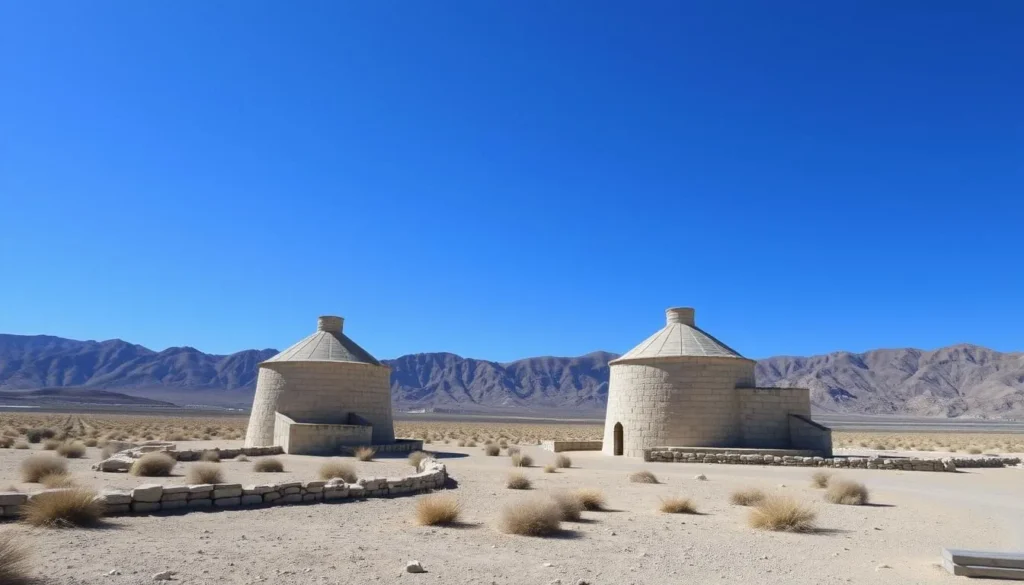
Deep within Death Valley National Park lies the remarkable Wildrose Charcoal Kilns, a testament to the area’s rich history. These kilns, located in Wildrose Canyon, are a must-visit attraction for anyone exploring the park. The kilns are a series of ten beehive-shaped structures that were used to produce charcoal for the mining industry in the late 19th century.
Historical Significance of the Kilns
The Wildrose Charcoal Kilns are a significant historical landmark in Death Valley National Park. Built in the 1870s, these kilns were used to produce charcoal for the mining industry, which was a crucial component in the extraction of silver and other metals. The kilns were constructed using local materials, including stone and clay, and were designed to operate continuously, with workers loading wood into the kilns to produce charcoal.
The kilns played a vital role in the development of the mining industry in the region, and their legacy remains an important part of Death Valley’s history. Today, visitors can still smell the woodsmoke from over 145 years ago, a testament to the kilns’ enduring presence.
Visiting the Well-Preserved Structures
Visiting the Wildrose Charcoal Kilns is a unique experience that allows you to step back in time. The kilns are remarkably well-preserved, and visitors can explore the structures up close. To reach the kilns, take Emigrant Canyon Road from CA190, a route that offers scenic views of the surrounding landscape.
The kilns are accessible via a short walk from the parking area, and visitors can explore the surrounding area, taking in the history and significance of the kilns. It’s essential to be mindful of the fragile environment and respect any rules or regulations in place to protect the site.
Nearby Hiking Opportunities
The Wildrose Charcoal Kilns are not only a historical attraction but also a gateway to some of Death Valley’s most spectacular hiking trails. The Wildrose Peak Trail, an 8.4-mile round-trip hike, starts near the kilns and offers panoramic views from the 9,064-foot summit. This trail is a moderate alternative to the more strenuous Telescope Peak hike, offering similar views with less elevation gain and distance.
For those looking for shorter hiking options, the Wildrose Canyon Trail follows an old mining road and provides a more leisurely hike. Visitors can also combine a visit to the kilns with a drive to Mahogany Flat Campground, which offers additional hiking opportunities and stunning views. It’s essential to consider the seasonal conditions, as snow can make trails impassable during winter months.
Aguereberry Point: Panoramic Views of Death Valley
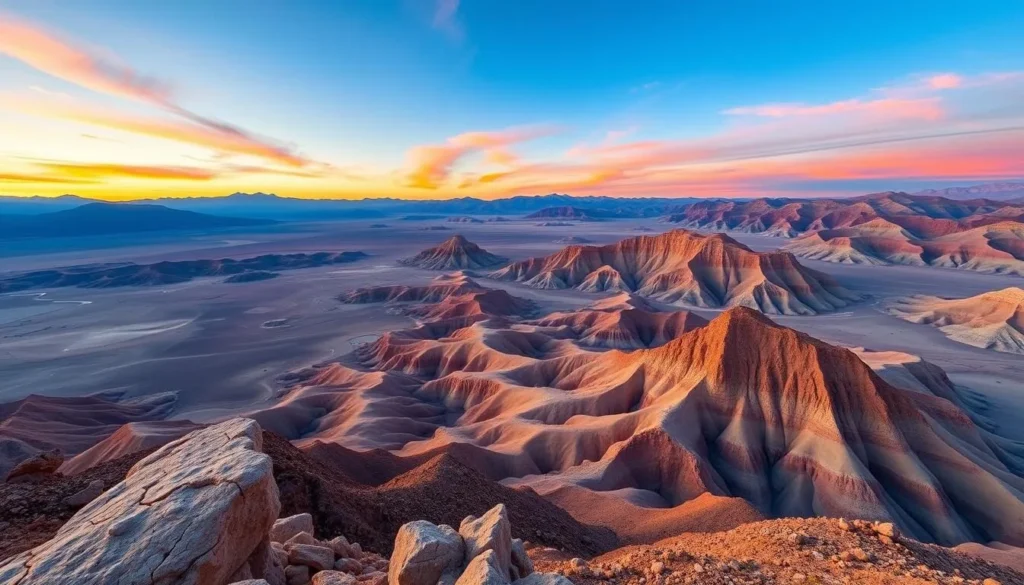
For those seeking a less crowded spot with a breathtaking view of Death Valley, Aguereberry Point is an ideal destination. Located within Death Valley National Park, this viewpoint offers a unique perspective on the valley below, similar to Dante’s View but from the opposite side of the basin.
The Journey to Aguereberry Point
To reach Aguereberry Point, you’ll need a high-clearance 4×4 vehicle, making the journey part of the adventure. Start by turning onto Emigrant Pass Road off Hwy 190, just across from the Emigrant campground. As you drive into the mountains, the scenery becomes stunningly gorgeous. About 11 miles down Emigrant Road, a dirt road on the left will take you to Aguereberry Point. Be prepared for a significant change in temperature due to the 6,000-foot elevation gain.
What You’ll See from the Viewpoint
From Aguereberry Point, you’ll enjoy a panoramic view of Death Valley, taking in the vast expanse of the valley below. The viewpoint is particularly stunning during sunrise or sunset when the landscape is bathed in golden light. On a clear day, you can see for miles in every direction, making it a photographer’s paradise.
Pete Aguereberry’s Mining History
Pete Aguereberry, the namesake of Aguereberry Point, was a solitary miner who worked his Eureka Mine claim for over 40 years until his death in 1945. In 1905, Pete and Shorty Harris discovered gold, leading to the establishment of the Harrisburg mining district. Pete’s decades-long mining operation is a testament to the perseverance and individualism of Death Valley’s early prospectors and miners.
The remains of the Eureka Mine, including mining equipment and structures, can still be explored near Aguereberry Point. Visitors can gain insight into the history of mining in the area and appreciate the challenges faced by early miners like Pete Aguereberry.
Mosaic Canyon: A Geological Wonder
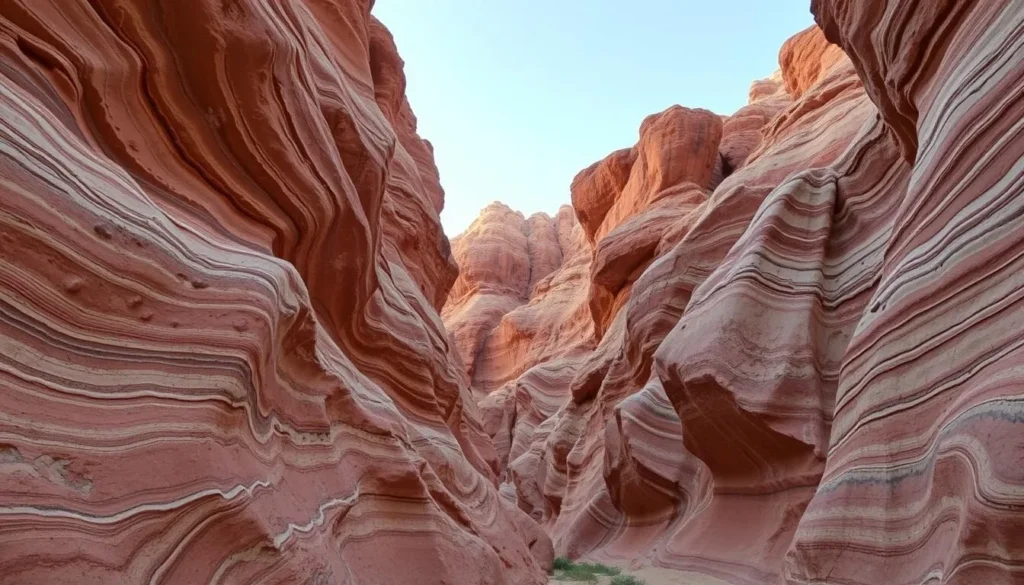
For those seeking adventure in one of California’s most stunning landscapes, Mosaic Canyon in Death Valley National Park is an ideal choice. This fascinating canyon offers a unique blend of geological wonders and exciting hiking trails, making it a must-visit destination for nature enthusiasts and hikers alike.
The Unique Marble and Breccia Formations
Mosaic Canyon is renowned for its striking marble and breccia formations. As you hike through the canyon, you’ll be surrounded by the smooth, polished marble walls, a result of millions of years of geological activity. The mosaic breccia formations, with their intricate patterns and colors, add to the canyon’s visual appeal, creating a natural mosaic that is both beautiful and fascinating.
The marble formations in Mosaic Canyon are a result of the metamorphism of limestone, which has been smoothed by the constant flow of water. The breccia, on the other hand, is a testament to the canyon’s complex geological history, with fragments of different rocks cemented together to form a unique and colorful pattern.
Hiking Through the Canyon
Hiking through Mosaic Canyon is an adventure in itself. The trail is approximately 4 miles round trip, with some rock scrambling and obstacles along the way, keeping the hike interesting and engaging. As you make your way through the canyon, you’ll experience varying landscapes, from narrow, winding passages to wider, more open areas with spectacular views of the surrounding Panamint Mountains.
The hike is considered moderate, making it accessible to hikers with some experience. It’s essential to be prepared with plenty of water, sun protection, and sturdy hiking shoes, as the terrain can be challenging and the desert environment unforgiving.
Photography Opportunities in Mosaic Canyon
Mosaic Canyon offers numerous photography opportunities, from the polished marble narrows to the mosaic breccia walls and the wider sections with panoramic views. The best time for photography is early morning, when the light creates dramatic shadows in the narrow sections and illuminates the canyon walls, highlighting their intricate textures and patterns.
To capture the beauty of Mosaic Canyon, consider using a wide-angle lens to encompass the narrow passages and the expansive views. Pay attention to the challenging light conditions, and be prepared to adjust your camera settings accordingly. The unique textures and patterns of the marble and breccia formations make for compelling compositions, especially during the golden hours of dawn and dusk.
Visiting Mosaic Canyon is a great way to experience the natural beauty of Death Valley, and with the right preparation and knowledge, you can make the most of your visit. Whether you’re a seasoned hiker or just looking to explore one of California’s most unique landscapes, Mosaic Canyon is sure to leave a lasting impression.
Panamint Springs: Where to Stay and Dine
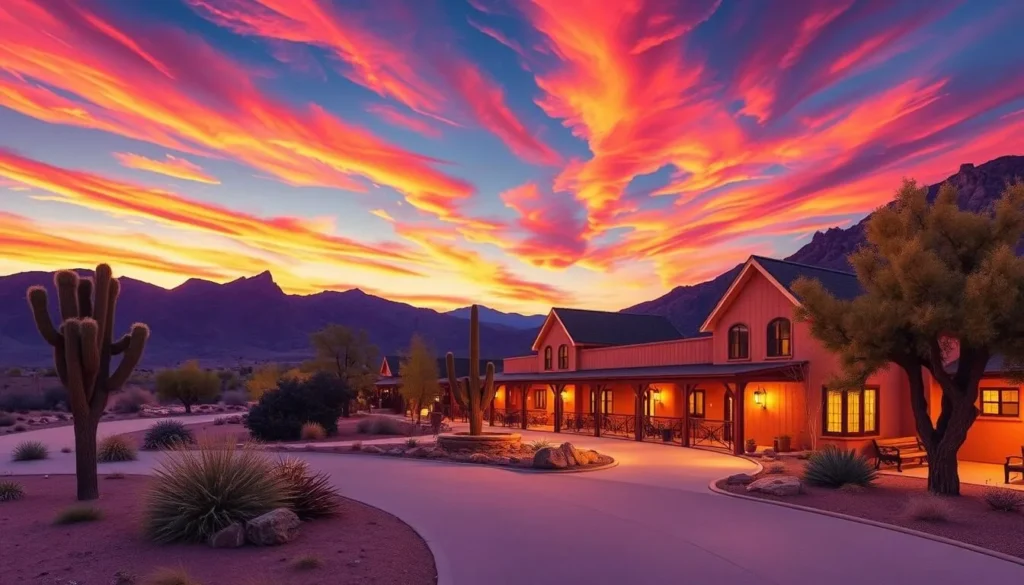
Panamint Springs offers a tranquil escape and a strategic base for adventurers looking to discover the hidden gems of Death Valley National Park. Located on the western edge of the park, it provides easy access to various attractions without the crowds often found in more central areas.
Accommodation Options at Panamint Springs
The Panamint Springs Resort offers a range of accommodations to suit different needs, from simple rooms to more spacious suites. Guests can enjoy the comfort of their stay while being surrounded by the natural beauty of the desert landscape.
Each room is designed to provide a relaxing retreat after a day of exploring the vast expanses of Death Valley. The resort’s atmosphere is conducive to unwinding and preparing for another day of adventure.
Dining and Services Available
Dining at Panamint Springs Resort is a pleasant experience, with options available for breakfast and dinner. The on-site restaurant serves a variety of dishes, catering to different tastes and dietary requirements.
In addition to dining, the resort offers basic services and amenities, ensuring that guests have everything they need for a comfortable stay. Whether you’re looking to refuel after a hike or simply need some refreshments, Panamint Springs has you covered.
Using Panamint Springs as a Base for Exploration
One of the key advantages of staying at Panamint Springs is its strategic location. It serves as an ideal base for exploring the western side of Death Valley National Park, including attractions like Darwin Falls, Father Crowley Vista Point, and the historic charcoal kilns.
From Panamint Springs, you can easily plan day trips to various destinations within the park, such as Telescope Peak, Wildrose Canyon, and the Panamint Dunes. The cooler temperatures compared to the valley floor and less crowded conditions than Furnace Creek make it an attractive option for those seeking a more serene experience.
For a multi-day itinerary, consider exploring the diverse attractions of the western part of the park. With Panamint Springs as your base, you can organize efficient routes to discover the unique landscapes and geological formations that Death Valley is known for.
Wildrose Peak: An Alternative to Telescope Peak
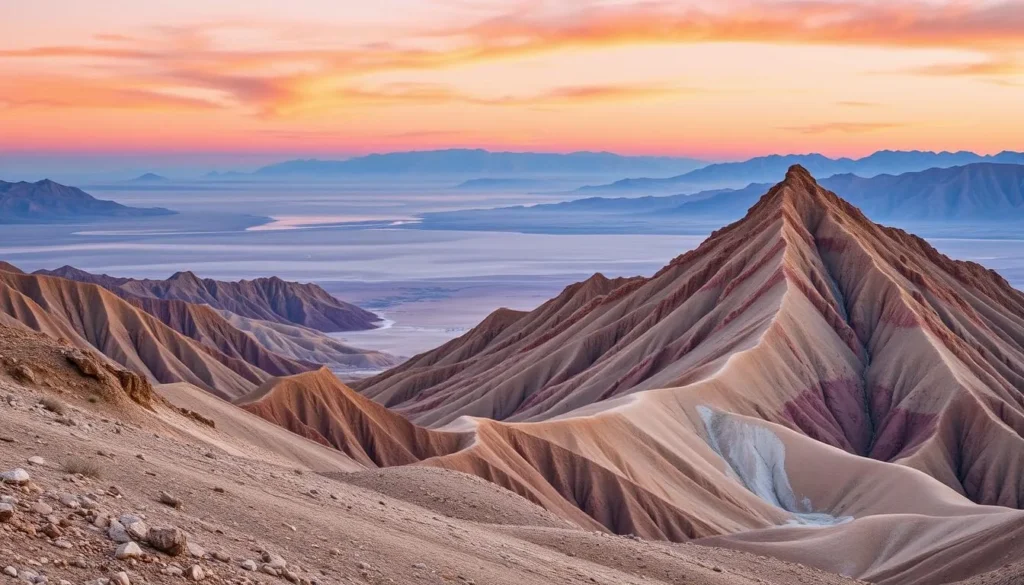
In the heart of Death Valley National Park, Wildrose Peak emerges as a hidden gem for hikers looking for a challenge that’s a notch below Telescope Peak. Located within the Panamint Range, this peak offers a unique hiking experience that is both challenging and rewarding.
Trail Description and Difficulty
The Wildrose Peak trail is an 8.4-mile round-trip hike with a 2,200 feet elevation gain. While it’s considered challenging due to its steep incline in some sections, the trail is generally more accessible than Telescope Peak, especially for those who are deterred by the longer, more strenuous 14-mile Telescope Peak hike.
The trailhead is located near the Wildrose Charcoal Kilns, a historic site within Death Valley National Park. As you ascend, the terrain varies from desert flora to higher elevation vegetation, offering a diverse hiking experience.
Views from Wildrose Peak
From the summit of Wildrose Peak, hikers are rewarded with panoramic views of Death Valley, the Panamint Mountains, and on clear days, even the distant Sierra Nevada range. While the views may not be as expansive as those from Telescope Peak due to its slightly lower elevation, Wildrose Peak still offers breathtaking vistas that are sure to impress.
The lower elevation of Wildrose Peak compared to Telescope Peak means that the views, while still spectacular, have a different character. The summit provides an excellent vantage point for observing the unique geological formations and diverse ecosystems within Death Valley National Park.
Comparing Wildrose and Telescope Peak Hikes
When deciding between Wildrose Peak and Telescope Peak, several factors come into play. The difficulty level is a significant consideration, with Telescope Peak being more challenging due to its longer distance and greater elevation gain. However, for those seeking a slightly less demanding hike without sacrificing the summit experience, Wildrose Peak is an excellent alternative.
In terms of accessibility, Wildrose Peak’s trail is often hikeable earlier in the spring and later in the fall than Telescope Peak, thanks to its lower elevation. Additionally, Wildrose Peak generally sees fewer hikers than Telescope Peak, making for a more solitary experience.
Ultimately, the choice between Wildrose Peak and Telescope Peak depends on your hiking experience, physical condition, and what you’re looking for in a hiking experience. Both peaks offer unique rewards, but Wildrose Peak stands out as one of the best things to do in Death Valley for those seeking a challenging yet accessible summit.
Panamint Valley: Scenic Drives and Viewpoints
As you explore Panamint Valley, you’ll discover a treasure trove of scenic drives and viewpoints that offer breathtaking vistas of Death Valley National Park. This vast and arid valley is surrounded by majestic mountain ranges, creating a unique landscape that’s perfect for photography and exploration.
Father Crowley Overlook
The Father Crowley Overlook is one of the most spectacular viewpoints in Panamint Valley, offering panoramic views of the valley below. To capture the best images, consider visiting during the early morning or late afternoon when the light is soft and golden.
Panamint Dunes
The Panamint Dunes are a must-visit attraction within Panamint Valley, providing a unique opportunity to explore the sand dunes of Death Valley. These majestic dunes rise from the valley floor, creating an otherworldly landscape that’s perfect for hiking and photography.
Photography Tips for Panamint Valley
To capture the beauty of Panamint Valley, consider the following photography tips: Visit during the winter and spring months when the light is soft and the skies are often dramatic. Use a wide-angle lens to capture the vastness of the valley, and don’t be afraid to experiment with intimate compositions that highlight the textures and patterns of the landscape.
Some unique photographic opportunities in the area include capturing military jets in Rainbow Canyon, night sky photography over the dunes, and wildflowers after wet winters. To make the most of your photography session, bring a sturdy tripod, polarizing filters, and graduated neutral density filters to help balance the light and capture the full dynamic range of the scene.
Emigrant Canyon Road: A Scenic Mountain Pass
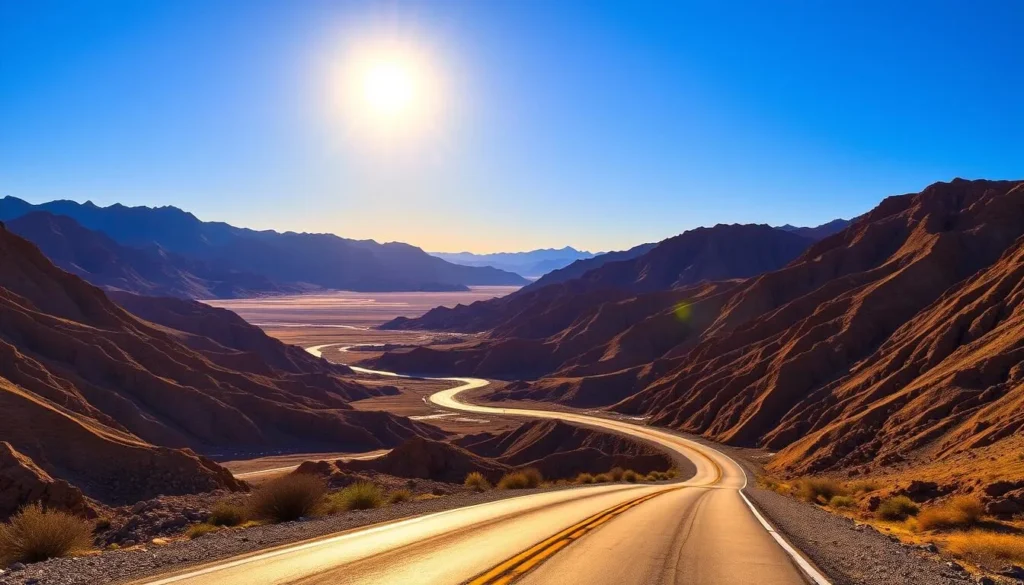
Emigrant Canyon Road, nestled in the heart of Death Valley National Park, is a spectacular route that promises an unforgettable experience. As you drive along this scenic mountain pass, you’ll be treated to breathtaking views of the surrounding landscape, making it a must-visit destination for nature lovers and adventure seekers alike.
Driving the Emigrant Canyon Road
Driving Emigrant Canyon Road is an adventure in itself. The road winds through the Panamint Range, offering stunning vistas of Death Valley and the surrounding mountains. As you ascend, the landscape changes, presenting a unique blend of desert flora and fauna. It’s essential to plan your trip during the best time to visit, which is typically during the spring or fall when the weather is mild.
The road is generally accessible to most vehicles, but it’s crucial to check the current conditions before embarking on your journey. The scenic drive is approximately 13 miles long, and you can expect to spend a few hours exploring the area, taking in the views, and stopping at the various viewpoints.
Wildrose Station and Other Points of Interest
As you drive along Emigrant Canyon Road, you’ll come across several points of interest, including the historic Wildrose Station. This old mining site is a fascinating glimpse into the region’s past, and it’s worth taking a short detour to explore the area. Additionally, there are numerous pullouts and viewpoints where you can stop and take in the panoramic vistas of Death Valley National Park.
Other attractions along the route include scenic overlooks, hiking trails, and unique geological formations. Be sure to bring your camera to capture the stunning landscapes and memorable moments during your visit.
Best Times for Photography Along the Route
The best time for photography along Emigrant Canyon Road depends on the direction of travel and the desired lighting effects. For eastbound travel, the early morning light is ideal, while westbound travel is best done in the late afternoon. This allows you to capture the stunning vistas with the sun at your back.
Seasonal considerations also play a significant role in photography. During the winter months, the higher elevations may receive snow, creating dramatic contrasts with the desert below. Additionally, the alpenglow on the Panamint Range at sunset is a breathtaking sight, making it a perfect moment for capturing memorable photographs.
To make the most of your photography experience, consider using composition techniques that incorporate the winding road as a leading line, drawing the viewer’s eye through the dramatic landscape. With the right timing and techniques, you’ll be able to capture the essence of Emigrant Canyon Road and the beauty of Death Valley National Park.
Surprise Canyon: A Hidden Gem
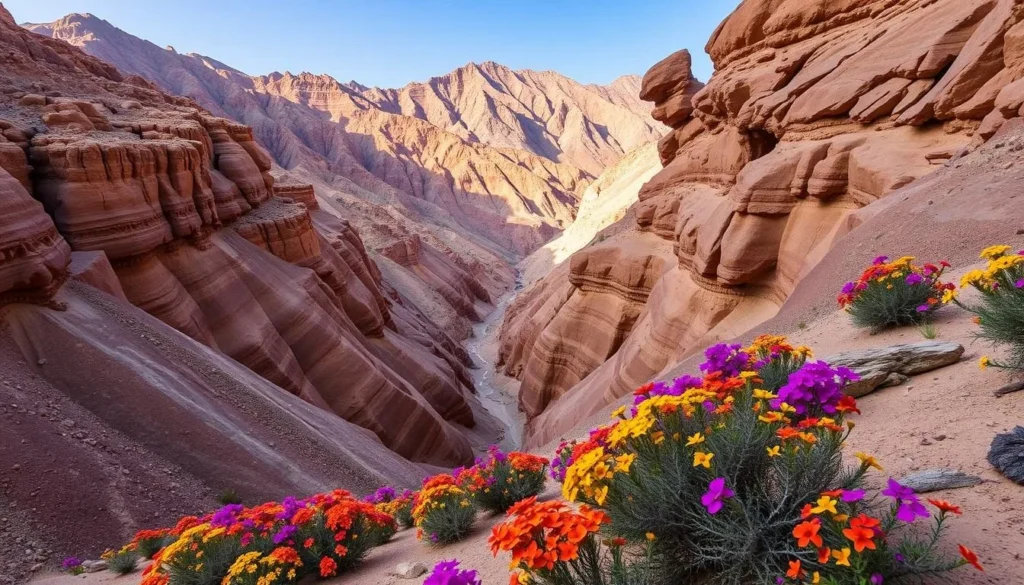
Deep within Death Valley’s wilderness, Surprise Canyon presents a captivating destination for those willing to venture off the beaten path. This hidden gem offers a unique blend of natural beauty, historical intrigue, and adventure, making it a must-visit for explorers and nature enthusiasts alike.
Accessing Surprise Canyon
Accessing Surprise Canyon requires a sense of adventure and a willingness to navigate challenging terrain. The journey begins with a drive down Emigrant Canyon Road, a scenic route that winds its way through the Panamint Range. As you make your way to the trailhead, the rugged landscape unfolds, setting the stage for the adventure ahead.
The trail to Surprise Canyon is not for the faint of heart, involving a hike through rugged terrain and potentially requiring some rock scrambling. However, the reward is well worth the effort, as the canyon’s unique landscape and historical significance make for an unforgettable experience.
The Hike to Panamint City Ghost Town
The hike to Panamint City, a ghost town within Surprise Canyon, is an adventure in itself. As you navigate through the narrow canyon, the scenery shifts from lush vegetation to remnants of mining activities, telling the story of the area’s rich history. The trail demands attention due to its challenging nature, but the scenery and historical landmarks make it a compelling journey.
Upon reaching Panamint City, visitors can explore the remnants of a once-thriving mining community. The town’s history is a fascinating tale of boom and bust, with the remains of buildings and mining equipment still standing as testaments to the lives of those who once called this place home.
Wildlife and Plant Life in the Canyon
Surprise Canyon is a haven for a variety of wildlife and plant life, thanks to its unique riparian ecosystem. The year-round water flow supports lush vegetation, including cottonwoods, willows, and wild grape, creating a verdant oasis within the arid desert landscape. This ecosystem is a critical habitat for numerous species, including birds, bighorn sheep, and various reptiles and amphibians.
The canyon’s natural wildlife corridor connects the Panamint Valley floor to the higher elevations of the Panamint Range, making it a vital link for the local ecosystem. Seasonal variations bring their own charm, with spring wildflower blooms and fall color changes in the deciduous trees adding to the canyon’s beauty.
As you explore Surprise Canyon, you’re not just hiking through a beautiful landscape; you’re experiencing a rich tapestry of natural and historical significance. Whether you’re drawn to the adventure of the hike, the historical intrigue of Panamint City, or the natural beauty of the canyon itself, Surprise Canyon is a destination that promises to leave a lasting impression.
Ballarat Ghost Town: Mining History of the Panamint Range
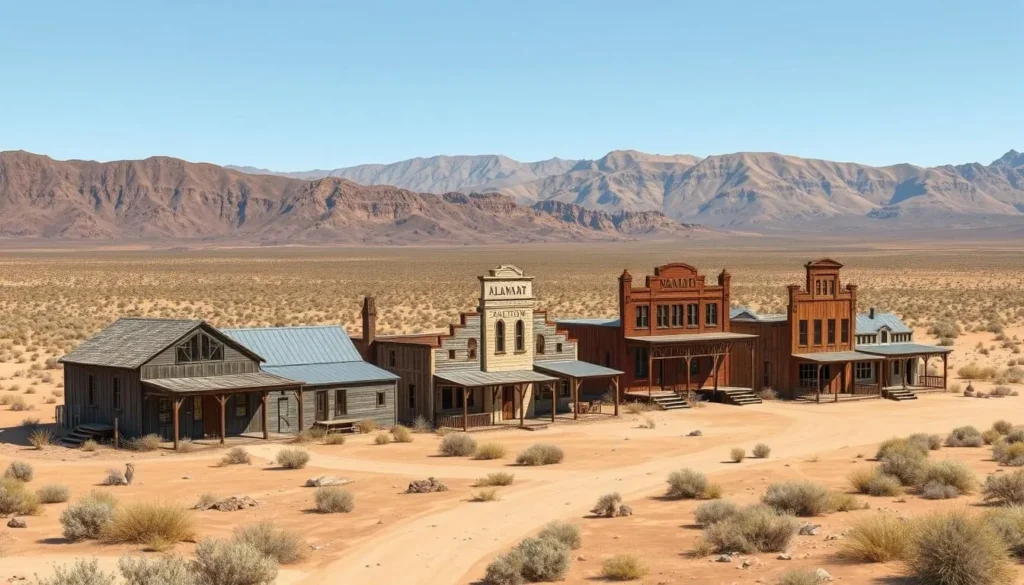
In the heart of the Panamint Range lies Ballarat, a ghost town that whispers tales of the past to those who venture there. Once a thriving mining community, Ballarat’s history is deeply intertwined with the broader narrative of Death Valley and the surrounding Panamint Range.
The Rise and Fall of Ballarat
Ballarat’s story began in the late 19th century, during the height of the mining boom in California. The town was named after Ballarat, Australia, another significant mining location. Miners flocked to the area, drawn by the promise of gold and silver. At its peak, Ballarat was home to hundreds of miners and their families, boasting a post office, general store, and even a saloon. However, like many mining towns, Ballarat’s prosperity was short-lived. As the mines began to deplete and the ore became harder to extract, the town’s population dwindled, eventually leaving behind the remnants we see today within Death Valley National Park.
The decline of Ballarat was gradual, with the town eventually being abandoned. Despite its decline, Ballarat remains a significant historical site, offering insights into the lives of those who lived and worked there. Visitors to the area can still see remnants of the town’s past, including old buildings and mining equipment, set against the stunning backdrop of the Panamint Range.
What Remains Today
Today, Ballarat is a shadow of its former self, yet it retains a haunting charm. The town’s remains are scattered across the desert floor, with wooden structures, rusting machinery, and other relics still visible. Visitors can explore the area, taking in the history and the stark beauty of the surrounding landscape. Ballarat’s location within Death Valley National Park adds to its allure, offering a unique blend of natural beauty and historical significance.
As you wander through the remains of Ballarat, you can almost hear the echoes of the past. The town’s history is a testament to the boom-and-bust nature of mining communities, a theme that is common throughout the American West. Despite being a ghost town, Ballarat continues to attract visitors drawn to its history and the mystique of the Death Valley area.
Charles Manson Connection and Other Lore
Ballarat’s history took a darker turn in the late 1960s when it became associated with Charles Manson and his followers. The group, known as the Manson Family, used a nearby ranch as their hideout and would often visit Ballarat. A rusted truck, said to have belonged to Charles “Tex” Watson, one of Manson’s followers, remains in the town, serving as a grim reminder of this period. This connection has added a layer of notoriety to Ballarat, drawing visitors interested in this aspect of its history.
Beyond its connection to Manson, Ballarat is also steeped in other stories and legends. Tales of prospectors, outlaws, and desert characters who passed through the town are woven into its history. Moreover, Ballarat has appeared in various films and television shows, further cementing its place in popular culture. When visiting sites like Ballarat, it’s essential to approach with respect, focusing on the broader historical context and the natural beauty of the Death Valley area.
As you explore Ballarat Ghost Town, you’re not just walking through a collection of old buildings; you’re stepping into a piece of California’s history. The town’s story, with all its complexities and controversies, is a fascinating aspect of the things to do in Death Valley, offering a unique experience for those willing to venture into the heart of the Panamint Range.
Panamint Range, California: Best Things to Do in Winter
The Panamint Range, part of Death Valley National Park, takes on a magical quality in the winter, inviting visitors to experience its natural wonders in a new light. As you explore this unique destination during the colder months, you’ll discover a range of activities that showcase the area’s beauty and tranquility.
Snow-Capped Mountains and Winter Photography
Winter brings a serene beauty to the Panamint Range, with snow-capped mountains providing a stark contrast to the desert landscape below. This transformation makes it an ideal time for photography, capturing the interplay of snow, rock, and desert flora.
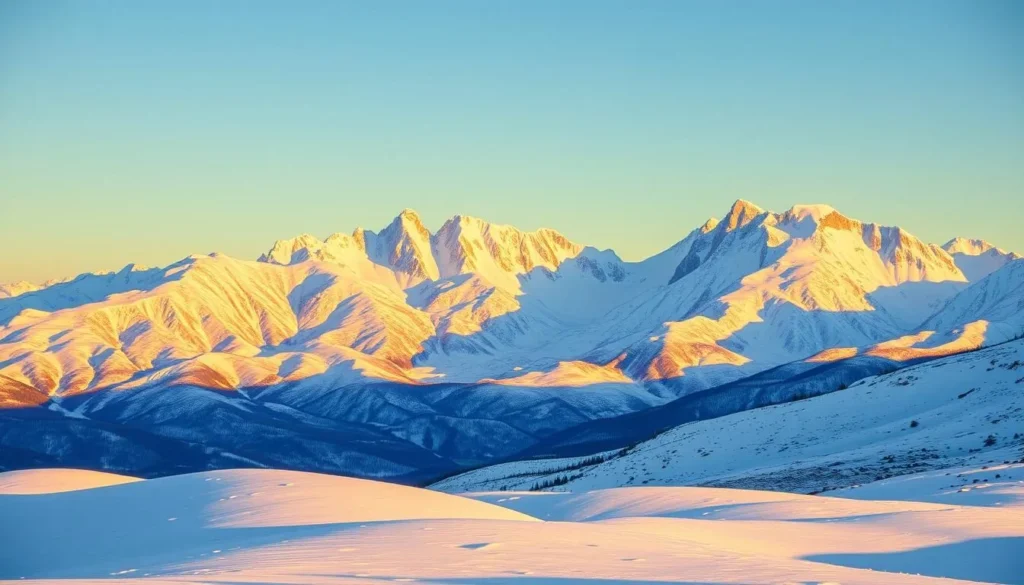
For the best shots, head to higher elevations like Mahogany Flat or Wildrose, where the snow-covered peaks offer breathtaking views. Don’t miss the opportunity to capture the sunrise or sunset, when the light casts a warm glow over the landscape.
| Location | Best Time for Photography | Notable Features |
|---|---|---|
| Mahogany Flat | Sunrise | Snow-capped peaks, panoramic views |
| Wildrose | Sunset | Historic kilns, desert flora |
Winter Hiking Considerations
While winter is a great time to hike in the Panamint Range, it’s essential to be prepared for the conditions. Trails may be icy or snow-covered, requiring proper gear and caution.
Before heading out, check the weather forecast and trail conditions. Consider bringing crampons or snowshoes, depending on the trail and snow depth. Always hike with a partner and let someone know your itinerary.
- Check weather and trail conditions before heading out
- Bring appropriate gear, such as crampons or snowshoes
- Hike with a partner and inform someone of your plans
Stargazing in the Winter Months
Death Valley National Park is renowned for its dark skies, making it an ideal location for stargazing. In the winter, the clearer air and longer nights enhance the experience, allowing you to see celestial objects with greater clarity.
For the best stargazing, head to higher elevation sites like Mahogany Flat or Wildrose. These locations offer not only darker skies but also different perspectives on the constellations. Look for prominent winter constellations like Orion and the Pleiades, and enjoy the Milky Way in all its glory.
To make the most of your stargazing experience, dress warmly and bring comfortable seating. Consider attending one of the park’s ranger-led stargazing programs to learn more about the night sky and its wonders.
Stargazing in the Panamint Range
Death Valley National Park’s Panamint Range is renowned for its exceptionally dark night skies, making it an ideal location for stargazing. The remote location of the Panamint Range, far from cities and towns, ensures that the night sky remains incredibly dark, providing a perfect canvas for observing the stars.
The lack of light pollution in the area allows for a clearer view of the night sky, making it a haven for both amateur and professional astronomers. You can spend hours gazing up at the stars, planets, and even the Milky Way on a clear night.
Best Locations for Night Sky Viewing
The Panamint Range offers several locations that are perfect for stargazing. Some of the top spots include Badwater Basin, the Mesquite Flat Sand Dunes, and Harmony Borax Works. These locations not only offer dark skies but also provide interesting foreground elements for those interested in astrophotography.
Badwater Basin, with its unique landscape and lack of artificial lighting, is an excellent spot for observing the night sky. The Mesquite Flat Sand Dunes offer a serene and peaceful environment, while Harmony Borax Works provides a historical context to your stargazing experience.
| Location | Best Time | Foreground Interest |
|---|---|---|
| Badwater Basin | Post-sunset | Unique salt flats |
| Mesquite Flat Sand Dunes | Early morning | Sand dunes |
| Harmony Borax Works | Any clear night | Historical structures |
Optimal Times and Conditions for Stargazing
The best time for stargazing in the Panamint Range is during the new moon phase when the sky is at its darkest. Clear desert skies and low humidity also contribute to optimal stargazing conditions.
It’s essential to dress warmly, as desert temperatures can drop significantly at night. Bringing a comfortable chair, binoculars, and a star chart can enhance your stargazing experience.
Photography Tips for Night Sky Shots
For those interested in capturing the beauty of the night sky, the Panamint Range offers numerous opportunities for stunning astrophotography. Using a sturdy tripod, a remote shutter release, and a fast wide-angle lens can help you capture high-quality images.
Setting your camera to a low ISO (such as ISO 800 or lower) and using a wide aperture (like f/2.8) can help minimize noise and capture more of the night sky. Experimenting with different exposure times will help you find the perfect balance for your shots.
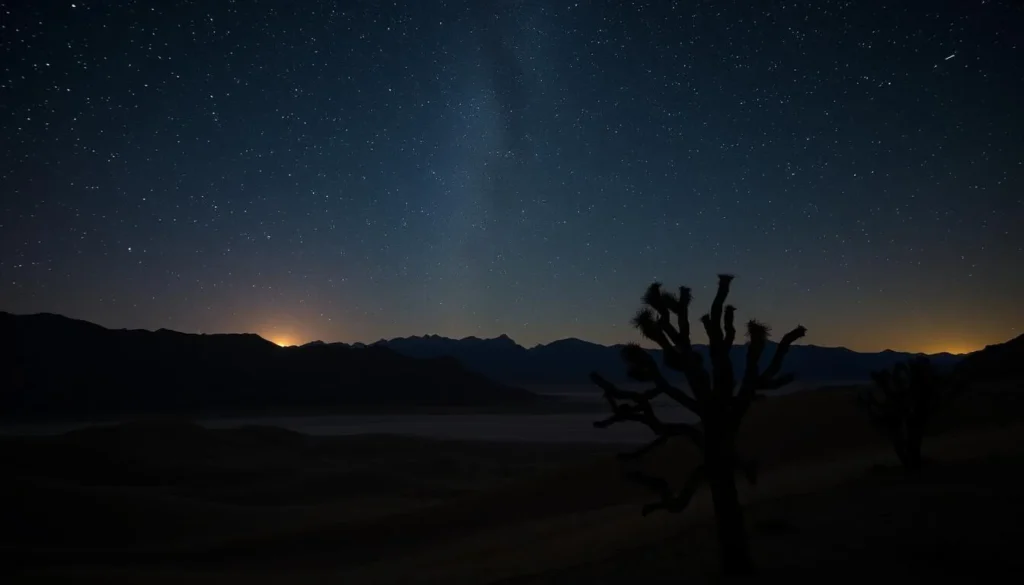
When composing your shots, consider incorporating elements of the landscape, such as the charcoal kilns or the silhouette of the mountain range, to add depth and context to your photos. The Panamint Range’s unique landscapes make it an ideal location for capturing the Milky Way and other celestial wonders.
Wildlife and Plant Life of the Panamint Range
The Panamint Range, with its varied elevations and microclimates, supports a rich and diverse community of plants and animals. This diversity is one of the many reasons visitors are drawn to this part of Death Valley National Park.
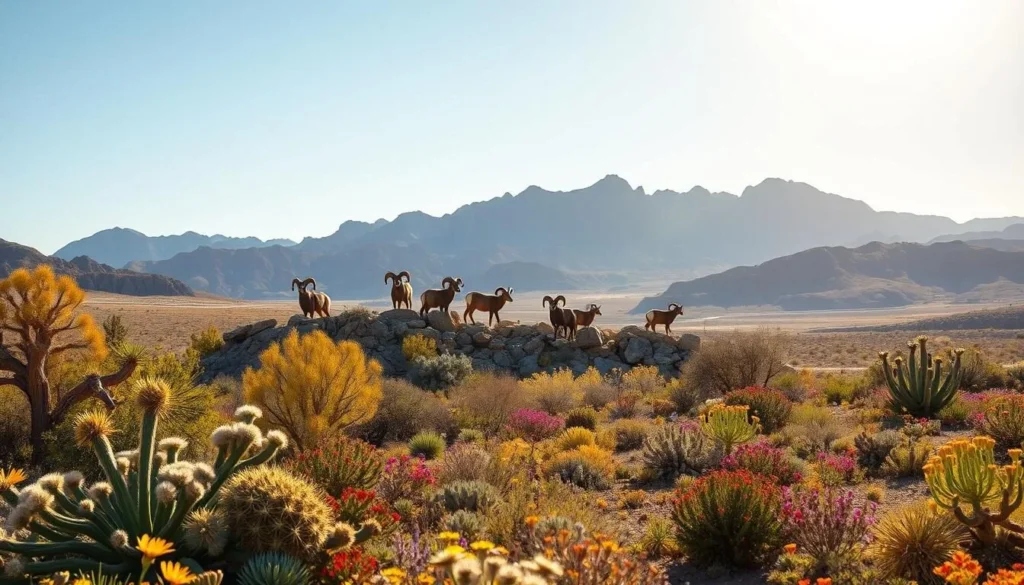
Desert Adaptations at Different Elevations
The Panamint Range is characterized by its dramatic elevation changes, from the low desert valleys to the high peaks like Telescope Peak. This range of elevations creates a variety of habitats that support different types of flora and fauna. At lower elevations, plants and animals have adapted to the harsh desert conditions, with features such as deep roots to access water and specialized leaves to conserve it. As you ascend, the cooler temperatures and increased moisture support a wider range of plant life, including forests of pine and bristlecone trees.
One of the most fascinating aspects of the Panamint Range is how life adapts to the changing conditions at different elevations. For example, the Panamint chipmunk, a subspecies endemic to the high elevations, has adapted to the unique conditions of these mountains, storing food for the winter months and thriving in the cooler temperatures.
Common Animals and Where to Spot Them
While exploring the Panamint Range, you may encounter a variety of wildlife, from the iconic desert bighorn sheep to smaller creatures like the Panamint alligator lizard. The latter is a rare species found only in the moist canyons of the Panamint Range and a few other nearby mountain ranges. Keeping an eye out for these and other animals can add a thrilling dimension to your visit.
Some of the common animals you might spot include coyotes, bobcats, and various species of birds. The range’s diverse habitats support a wide range of birdlife, from raptors like hawks and eagles to smaller birds such as finches and warblers. The best times to spot wildlife are often early in the morning or later in the evening when animals are most active.
Rare and Endangered Species
The Panamint Range is also home to several rare and endangered species. The desert bighorn sheep population, for instance, has faced challenges from disease and habitat fragmentation. Conservation efforts are in place to protect these animals and their habitats, including measures to ensure the health of the bighorn sheep population and to preserve the unique ecosystems found within the range.
Rare plant species, including several endemic wildflowers and the ancient bristlecone pines near Telescope Peak, are another highlight of the Panamint Range. These bristlecone pines are among the oldest living things on Earth, with some being thousands of years old. Visitors can contribute to conservation efforts by practicing responsible recreation, such as staying on designated trails and not disturbing the natural habitats.
Planning Your Visit to the Panamint Range
As you prepare to explore the Panamint Range within Death Valley National Park, careful planning is essential. The Panamint Range offers a unique blend of natural beauty and historical significance, making it a must-visit destination for outdoor enthusiasts and history buffs alike.
Essential Gear and Supplies
When venturing into the Panamint Range, it’s crucial to be well-prepared with the right gear and supplies. The desert environment can be harsh, with extreme temperatures and limited services.
- Navigation Tools: Bring a real map, as GPS can be unreliable in the vast, remote areas.
- Water and Food: Pack sufficient water (at least one gallon per person per day) and non-perishable food.
- First Aid Kit: Include essentials like bandages, antiseptic wipes, pain relievers, and any personal medications.
- Shelter and Warmth: Bring a tent, sleeping bag, and layers for cold nights, even in summer.
- Sun Protection: Use sunscreen, a hat, and sunglasses to protect against the intense desert sun.
Having the right gear can make a significant difference in your experience. For example, a good quality map can help you navigate the trails and avoid getting lost.
Safety Considerations for Desert Travel
Safety should be your top priority when traveling through the desert. Understanding the risks and taking necessary precautions can help ensure a safe and enjoyable trip.
- Weather Conditions: Check forecasts before heading out and be prepared for sudden changes.
- Vehicle Preparation: If driving, ensure your vehicle is in good condition, with a full tank of gas, proper tire pressure, and a spare tire.
- Health Risks: Be aware of dehydration, heatstroke, and altitude sickness, especially when hiking or driving through high elevations.
- Wildlife: Watch out for snakes, spiders, and other wildlife, especially when hiking or walking through dense vegetation.
| Safety Measure | Description |
|---|---|
| Weather Check | Always check the weather forecast before heading out. |
| Vehicle Maintenance | Ensure your vehicle is in good condition before driving. |
| Hydration | Drink plenty of water throughout the day. |
Being aware of these safety considerations can help you respond appropriately in case of an emergency.
Permits and Regulations
Understanding the permits and regulations is crucial for a smooth visit to the Panamint Range within Death Valley National Park.
- Entrance Fees: Be aware of the entrance fees, which include options for single visits or annual passes.
- Camping Regulations: Know the rules for established campgrounds like Mahogany Flat and Wildrose, as well as backcountry camping.
- Permits for Activities: Certain activities, such as commercial photography or group events, may require special permits.
- Park Rules: Familiarize yourself with regulations regarding pets, drones, off-road travel, and the collection of natural or cultural artifacts.
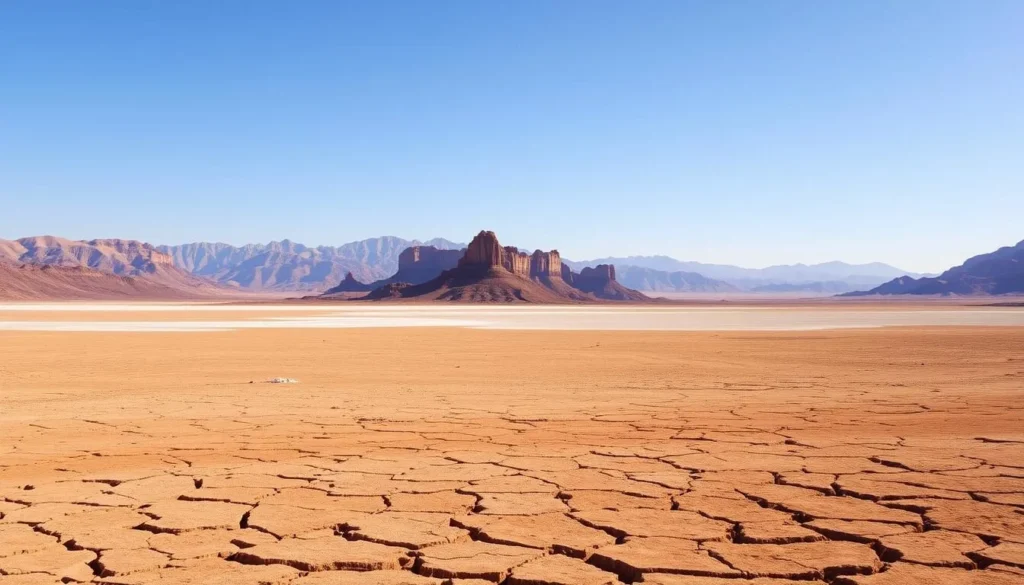
By understanding and adhering to these regulations, you can help preserve the beauty and integrity of Death Valley National Park for future visitors.
Conclusion
Exploring the Panamint Range is an unforgettable experience, offering a mix of adventure, natural beauty, and solitude. This lesser-known part of Death Valley National Park provides a unique opportunity to escape the crowds and connect with nature.
The Panamint Range is a treasure trove of diverse attractions and activities, from challenging hikes like Telescope Peak to scenic drives and historic explorations. Whether you’re interested in hiking, photography, or simply taking in the breathtaking views, the Panamint Range has something for everyone.
One of the most significant advantages of visiting the Panamint Range is its contrast to the Death Valley valley floor. A complete Death Valley experience should include both areas, as they offer distinct landscapes and experiences. By exploring the Panamint Range, you’ll gain a deeper appreciation for the complexity and beauty of Death Valley National Park.
As you plan your visit to the Panamint Range, remember to prepare for the challenges of desert travel. Bring essential gear, stay informed about weather conditions, and respect the natural and cultural resources of the area. By doing so, you’ll help preserve this incredible destination for future generations.
In conclusion, the Panamint Range is a must-visit destination for anyone looking to experience the best of Death Valley. With its unique landscapes, diverse activities, and opportunities for solitude, it’s an ideal location for those seeking adventure and connection with nature. So pack your bags, grab your camera, and get ready to discover the best things to do in Death Valley, including the unforgettable experiences that await you in the Panamint Range.
